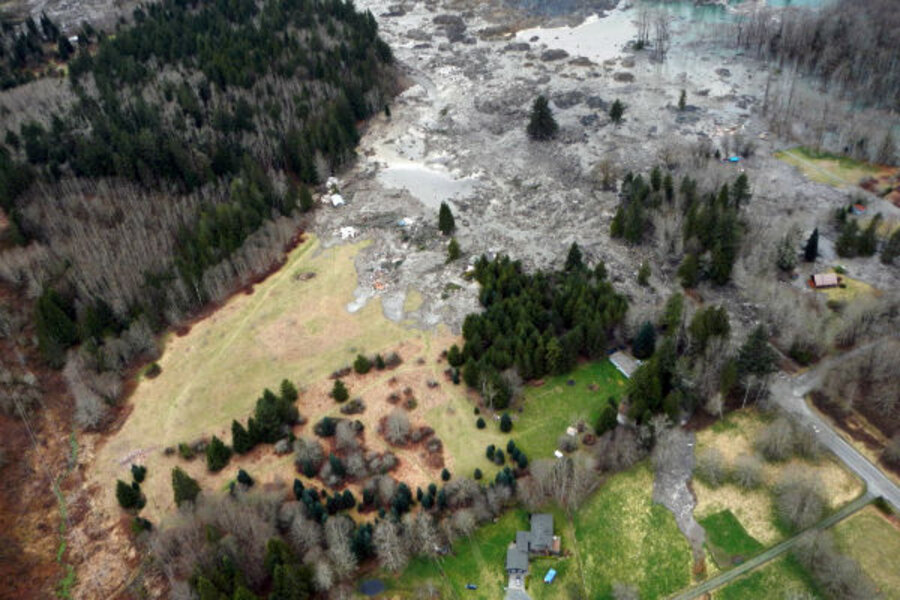Urgent search for up to 108 missing in Washington mudslide
Loading...
Rescue teams continue to search for about 100 people missing since Saturday’s catastrophic mudslide north of Seattle in Washington State, but hopes are dimming as officials characterize the situation on Monday as "very grim."
The massive mudslide is known to have claimed at least eight lives, and as many as 108 people are reported missing.
“We’re still holding out hope that we are going to be able to find people that may still be alive,” John Pennington, director of Snohomish County Department of Emergency Management, said during a news briefing Monday. “But keep in mind we have not found anybody alive on this pile since Saturday in the initial stages of our operation.”
The 108 missing is a “soft” number derived from a variety of reports and probably includes duplicate names. “The number is, I think, no question going to decline dramatically,” said Mr. Pennington.
Snohomish County has established a hot line for individuals and families to report missing people and for those in the area to check in and announce their safety, he said.
“One of the greatest challenges that we face … is that this [mudslide] occurred on Saturday,” Pennington said. “A lot of these individuals would have probably have been gone away from those homes to work, but it was Saturday morning and they were home.”
Local, state, and federal emergency crews will use aircraft, rescue teams equipped with electronic sensors to probe the ground, and search dogs Monday in the ongoing search as the state Department of Transportation begins to clear mud out of the way, said Travis Hots, chief of Snohomish County Fire District 21, at the Monday briefing.
On the other side of the mudslide, the town of Darrington, Wash., remains isolated by water and mud that flooded State Road 530, Pennington said. Emergency management crews are working to get relief aid to the town.
A mile length of the Stillaguamish River remains clogged with about 15,000 cubic yards of debris, said Snohomish County Public Works Director Steve Thompson.
“It’s massive,” he said. “I mean, it’s the biggest thing I have seen in the 30 years I have been working in this area.”
On Sunday, river water neared the top of the slide, raising flood concerns, but the waters later found a path through the slide and started to cut a new river channel through the valley “at a slow-predictable” pace, Mr. Thompson said.
“That’s good news,” he said. “Mother Nature right now is doing a good job of recarving that river channel.”
This is not the first mudslide to devastate this area. Another slide occurred in the same location in 1967 and again in 2006, though the mud carved different paths during each of those slides, The Seattle Times reports.
“This is the very same mass of rock and dirt,” Tim Walsh, geologic hazards chief for the state Department of Natural Resources, told the Times. “Landslides often occur in the same place over and over.”
After the 2006 incident, the Stillaguamish tribe, the US Army Corps of Engineers, and the Washington State Department of Transportation took steps to fortify the area with the hope of preventing future mudslides, according to the Times.
"That area was mitigated very heavily," Pennington told reporters. "It was considered very safe."
The latest landslide was triggered by heavy rain, which had saturated the hillside along State Route 530 about 55 miles north of Seattle. The hillside gave way Saturday morning and destroyed at least 30 homes, according to The Associated Press.







